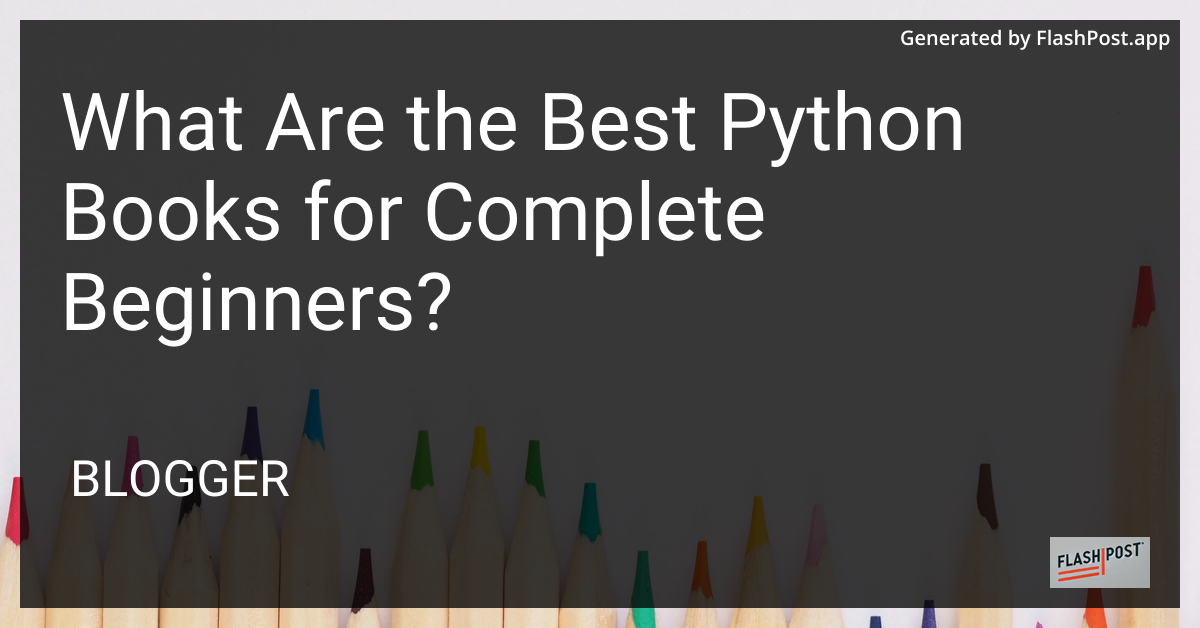What Are the Best Python Books for Complete Beginners?

What Are the Best Python Books for Complete Beginners?
Python is renowned for its simplicity and versatility, making it a popular choice for beginners diving into the world of programming. Whether you’re a complete novice or switching from another programming language, choosing the right resources can set the foundation for a successful learning journey. Here, we present a curated list of the best Python books tailored for absolute beginners.
1. Python Crash Course by Eric Matthes
“Python Crash Course” is highly recommended for beginners. The book offers a comprehensive introduction to Python, covering basic concepts as well as advanced topics. It is structured into two parts: the first half teaches fundamental programming concepts, while the second half tailors applications such as 2D games and data visualization projects. This hands-on approach ensures practical learning while keeping readers engaged.
2. Automate the Boring Stuff with Python by Al Sweigart
If you’re intrigued by the idea of using Python to automate mundane tasks, this book is for you. “Automate the Boring Stuff with Python” makes programming accessible without prior experience, focusing on real-world examples. It walks you through automating tasks like web scraping, updating spreadsheets, and managing files. The author’s clear instructions and engaging examples make it easy to follow along and effectively apply what you’ve learned.
3. Head-First Python by Paul Barry
“Head-First Python” adopts a visually rich format to deliver Python essentials in an engaging manner. This book is perfect for visual learners, covering core Python concepts and more advanced features like list comprehensions and data structures. With its interactive exercises and projects, you can better understand Python and see its practical applications.
4. Learn Python the Hard Way by Zed A. Shaw
For those who appreciate a challenge, “Learn Python the Hard Way” is an excellent choice. Zed A. Shaw offers no-nonsense instructions through a series of exercises designed to test your understanding of each concept before moving to the next. This unique, task-based approach demands active participation, allowing you to learn by doing.
5. Think Python: How to Think Like a Computer Scientist by Allen B. Downey
“Think Python” is designed to teach you Python while enhancing your problem-solving skills. Downey emphasizes the science behind programming, giving you the tools to think logically and efficiently. This book is ideal for those who wish to understand the ‘why’ behind each coding task, offering a robust blend of theory and practice.
Why Start with Python?
Python’s readability and intuitiveness make it the perfect programming language for beginners looking to grasp coding fundamentals. It provides numerous frameworks and libraries that simplify complicated tasks, bridging beginners to real-world applications seamlessly. Moreover, Python’s relevance extends beyond everyday programming, finding applications in areas like data analysis, machine learning, and web development.
For those interested in exploring the difference between Lua and Python in 2025, Python continues to stand out due to its robust community support and extensive documentation, propelling its presence in various domains.
Furthermore, as you delve deeper into Python programming, you might find resources on how to remove widgets from grid in tkinter incredibly useful when developing applications. Additionally, exploring features like creating an info icon with wxPython can enhance your understanding and implementation of Python in GUI development.
With these books and supplementary resources, you’re all set to embark on your Python journey, equipped with knowledge and confidence.
Comments
Post a Comment